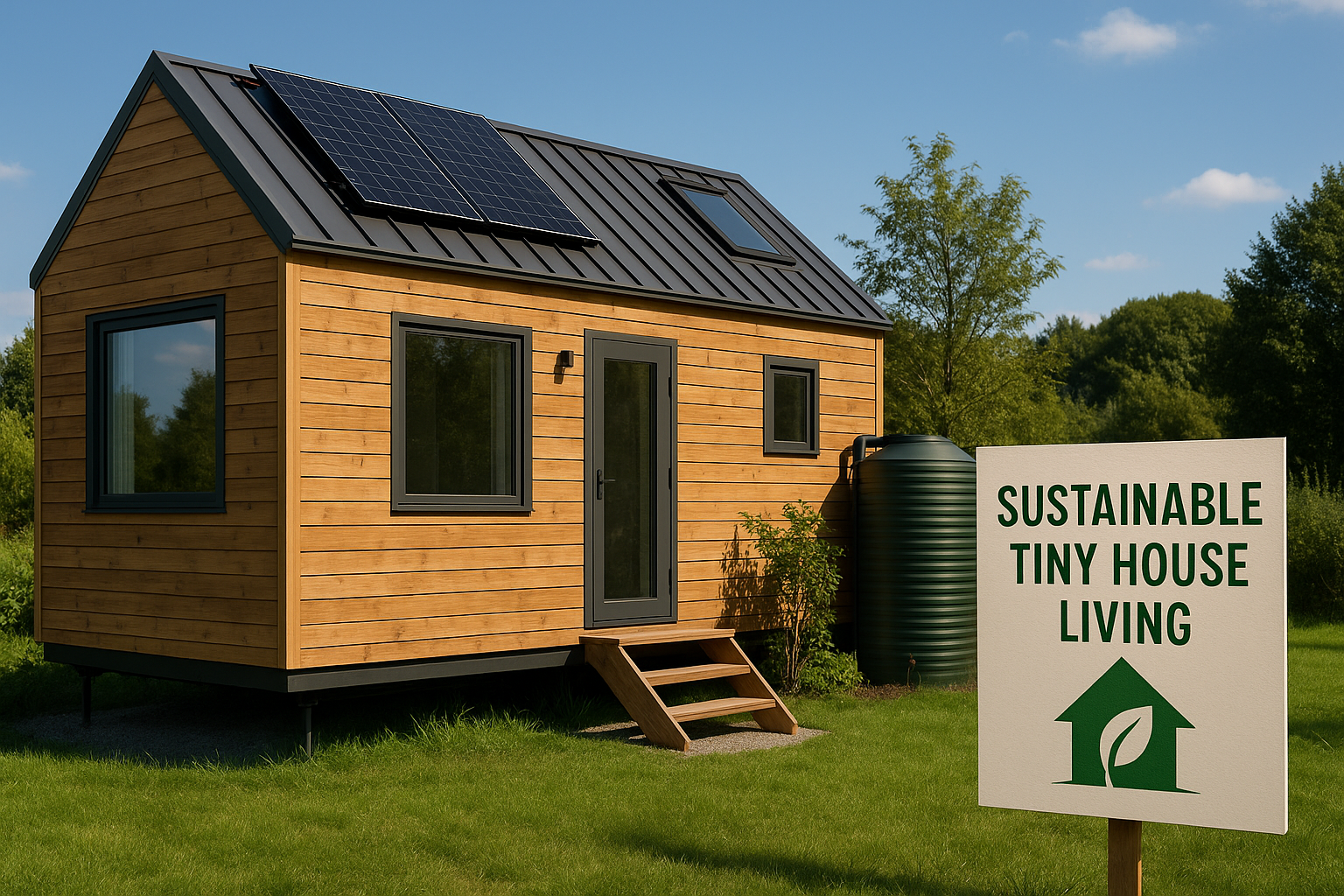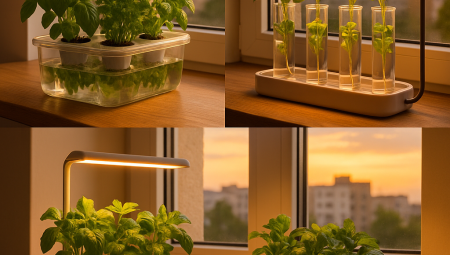In an era increasingly defined by environmental consciousness and the pursuit of intentional living, the concept of a “home” is evolving. Beyond mere downsizing, a powerful movement is taking root: sustainable tiny house living. This isn’t just about reducing square footage; it’s about embracing a lifestyle that minimizes your ecological footprint, maximizes resource efficiency, and fosters a deeper connection with your surroundings. In 2025, as climate concerns grow and the appeal of financial freedom intensifies, tiny houses built with sustainability at their core represent a visionary path forward.
This comprehensive guide will unpack the essence of sustainable tiny house living, offering a deep dive into the principles, technologies, and practical considerations that make these compact dwellings a beacon of eco-conscious habitation. Whether you’re an aspiring tiny homeowner, an environmental enthusiast, or simply curious about resilient living, this resource aims to equip you with the knowledge to build green, live small, and thrive sustainably.
The Core of Sustainable Tiny House Living: Minimalism Meets Eco-Consciousness
What Defines Sustainable Tiny House Living?
Sustainable tiny house living is the deliberate choice to combine the compact, efficient nature of a tiny house with environmentally responsible design and operational practices. It’s about more than just fitting into a small space; it’s about making thoughtful choices that reduce your consumption of resources, minimize waste, and lessen your impact on the planet. This includes everything from the materials used in construction to the energy systems that power the home and the daily habits of its occupants.
Why Embrace Sustainable Tiny House Living in 2025?
The allure of sustainable tiny house living is growing exponentially in 2025 for several compelling reasons:
- Environmental Impact Reduction: Tiny houses inherently use fewer materials and occupy less land. When coupled with sustainable practices, they dramatically reduce energy consumption, water usage, and waste generation. A 2024 study by the Tiny House Association noted that the average tiny house produces 60% less carbon emissions than a traditional home.
- Financial Freedom: Lower construction costs, reduced utility bills, and potentially no mortgage payments offer unparalleled financial liberation, allowing residents to save more, work less, and pursue passions.
- Increased Self-Sufficiency: Many sustainable tiny homes integrate off-grid systems, fostering greater independence from municipal utilities and increasing resilience.
- Mindful Consumption: Living in a small, sustainable space naturally encourages a minimalist lifestyle, prompting intentional choices about what you own and consume.
- Mobility and Flexibility: For those on wheels, a tiny house offers the freedom to relocate, exploring different environments while maintaining a consistent, eco-friendly home base.
The Pillars of a Truly Sustainable Tiny House
Achieving a sustainable tiny house living environment involves strategic planning across several key areas:
1. Eco-Friendly Construction Materials
What are the best sustainable materials for tiny house construction?
The foundation of a sustainable tiny house begins with its materials. Prioritizing eco-friendly options minimizes embodied energy (the energy consumed by producing and transporting materials) and reduces the use of toxic chemicals.
- Reclaimed & Recycled Materials: Using salvaged wood, repurposed windows, or recycled steel reduces demand for new resources and diverts waste from landfills.
- Sustainable Wood: Opt for FSC-certified wood or bamboo, which are rapidly renewable and responsibly harvested.
- Non-Toxic Insulation: Natural insulation materials like sheep’s wool, cotton denim, straw bales, or recycled cellulose offer excellent thermal performance without harmful chemicals.
- Low-VOC Paints & Finishes: Volatile Organic Compounds (VOCs) can degrade indoor air quality. Choosing low or zero-VOC paints ensures a healthier interior environment for sustainable tiny house living.
2. Energy Efficiency & Renewable Systems
How can I make my tiny house energy-independent and sustainable?
Minimizing energy consumption and harnessing renewable sources are central to sustainable tiny house living.
- Passive Design Principles Tiny House: Design your tiny house to naturally maximize sunlight for heating and natural ventilation for cooling. Proper orientation, strategic window placement, and adequate overhangs can significantly reduce reliance on active heating/cooling.
- High-Performance Insulation & Windows: Superior insulation (walls, floor, roof) and double or triple-pane windows prevent heat loss in winter and heat gain in summer, dramatically cutting energy needs.
- Off-Grid Tiny House Solar Power: Installing photovoltaic (PV) solar panels on the roof provides clean, renewable electricity. A properly sized solar system with battery storage can make your tiny house entirely independent from the grid.
- Energy-Efficient Appliances: Select Energy Star-rated appliances (refrigerator, hot plate, lighting) that consume minimal electricity. Consider propane or compact wood-burning stoves for heating and cooking.
3. Water Conservation & Management
What are the best water-saving systems for sustainable tiny homes?
Water is a precious resource, and efficient management is critical for sustainable tiny house living.
- Rainwater Harvesting for Tiny Homes: Collect rainwater from your roof into a cistern for non-potable uses like flushing toilets, showering, and irrigation. Advanced filtration systems can even make it potable.
- Greywater Recycling Systems: Divert water from sinks and showers (greywater) for landscape irrigation, significantly reducing fresh water consumption.
- Composting Toilets: These waterless toilets eliminate the need for flushing, saving thousands of gallons of water annually and producing nutrient-rich compost. Tiny house composting toilet systems are a hallmark of eco-friendly tiny living.
- Low-Flow Fixtures: Install low-flow showerheads, faucets, and high-efficiency washing machines to minimize water usage.
4. Waste Reduction & Management
How do you manage waste effectively in a sustainable tiny house?
Living small inherently encourages less consumption, but thoughtful waste management is still key to sustainable tiny house living.
- Composting: Organic waste (food scraps, yard waste) can be easily composted, turning it into nutrient-rich soil.
- Recycling & Upcycling: Maximize recycling efforts for plastics, glass, metal, and paper. Embrace upcycling by repurposing items instead of discarding them.
- Mindful Consumption: Consciously reduce your purchases, choosing durable, reusable items over disposable ones. Buy in bulk to minimize packaging waste.
5. Efficient Space Utilization & Minimalist Living
How do daily habits contribute to sustainable tiny house living?
Beyond the physical structure, the daily habits of occupants are crucial for sustainable tiny house living.
- Multi-Functional Furniture: Opt for furniture that serves multiple purposes (e.g., a sofa that converts to a bed, a table that folds away).
- Strategic Storage: Design clever storage solutions to keep clutter at bay and make the most of every square inch.
- Decluttering & Intentional Ownership: Regularly assess your possessions. Only keep what you truly need and use, fostering a lifestyle of intentional consumption.
Conclusion: The Future is Small, Green, and Fulfilling
Sustainable tiny house living offers a powerful blueprint for a more conscious and fulfilling existence in 2025 and beyond. It’s a testament to the idea that true abundance lies not in vastness, but in efficiency, intentionality, and harmony with the environment. By embracing eco-friendly construction, leveraging renewable energy, conserving precious water, minimizing waste, and cultivating a truly minimalist mindset, tiny homeowners are paving the way for a greener, more financially free, and deeply satisfying way of life.
This journey is about more than just building a house; it’s about building a better future, one compact, sustainable home at a time. Are you ready to embrace the possibilities of sustainable tiny house living and discover the profound freedom it offers?
💼 Pro Tips: Expert Hacks for Sustainable Tiny House Living
- Tip 1: Research Local Regulations: Before anything else, understand local zoning laws and building codes for tiny houses. Regulations vary widely and can impact your ability to implement certain sustainable systems (e.g., greywater recycling).
- Tip 2: Prioritize Passive Solar Design: Even before choosing materials, orient your tiny house to maximize natural light and passive heating/cooling. This is the most fundamental and cost-effective passive design principle for tiny houses for energy efficiency.
- Tip 3: Invest in High-Quality Insulation: This is non-negotiable for energy efficiency. Don’t skimp on insulation in walls, floors, and ceilings. It pays for itself rapidly in reduced heating/cooling costs.
- Tip 4: Consider a Hybrid Off-Grid System: While full off-grid tiny house solar power is ideal, a hybrid system (e.g., solar with a small generator for backup) can be more practical initially and scale up as your needs or budget allow.
- Tip 5: Learn About Your Systems: Understand how your composting toilet, rainwater harvesting, or solar power systems work. Regular maintenance and a basic understanding are crucial for their long-term sustainability and your self-sufficiency.
- Tip 6: Join the Community: Connect with other tiny house dwellers and sustainable living enthusiasts online and offline. Their shared experiences and practical advice can be invaluable for troubleshooting and inspiration.
❓ Frequently Asked Questions (FAQ)
What are the key benefits of sustainable tiny house living?
The key benefits of sustainable tiny house living include significantly reduced environmental impact (lower carbon footprint, less waste), greater financial freedom (lower costs, no mortgage), increased self-sufficiency (through off-grid systems), encouragement of a minimalist lifestyle, and often enhanced mobility and flexibility. It combines efficiency with eco-consciousness for a fulfilling life.
How much does it cost to build a sustainable tiny house in 2025?
The cost to build a sustainable tiny house in 2025 can vary significantly based on factors like size, materials, and the extent of off-grid systems. On average, a DIY sustainable tiny house might cost between $25,000 – $60,000 USD for materials, while a professionally built, custom sustainable tiny house could range from $70,000 – $150,000+ USD, especially with advanced solar, water, and waste management systems.
Can I live off-grid in a sustainable tiny house?
Yes, you absolutely can live off-grid in a sustainable tiny house. Many sustainable tiny homes are designed specifically for this purpose, integrating systems like off-grid tiny house solar power with battery storage for electricity, rainwater harvesting for water supply, and composting toilets for waste management. This allows residents to be largely independent of public utilities.
What are the challenges of sustainable tiny house living?
While rewarding, sustainable tiny house living comes with challenges. These can include navigating zoning and parking regulations, adapting to a smaller living space, managing waste effectively, dealing with the learning curve of off-grid systems, and sometimes facing societal perceptions or financing difficulties. Weather extremes can also pose challenges for optimal system performance.
How do I choose the right eco-friendly materials for my tiny house?
Choosing the right eco-friendly tiny house materials involves considering their embodied energy, durability, recyclability, and indoor air quality impact. Look for reclaimed or recycled timber, locally sourced wood with FSC certification, natural insulation (like wool or cellulose), metal roofing, and low-VOC paints and sealants. Prioritize materials that are both sustainable and durable for the long lifespan of your tiny home.
What aspects of sustainable tiny house living are you most eager to explore further for your own green living journey? Share your thoughts below!



